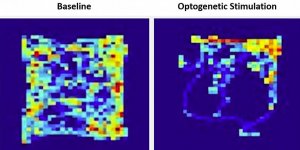| News / Science News |
Researchers Discovered Proteins Essential to Development of Skeletal Muscle
An international team of researchers discovered two proteins essential to the development of skeletal muscle. The research, could lead to a better understanding of rare muscular diseases and the development of new treatments.
Skeletal muscles are attached to our bones and enable our bodies to move. Whether in a developing embryo or a professional athlete, the same sequence leads to their formation.
In vertebrates, cells derived from stem cells, called myoblasts, first align with each other and come so close as to eventually touch and compress their cell membranes.
Ultimately, myoblasts merge to create one large cell. This phenomenon, called "cell fusion", is very particular. Cell fusion involves just a few tissues, including the development of the placenta and the remodeling of our bones.
To develop and also repair muscle, myoblasts have to perform their movements very carefully. No false move is permissible, otherwise there will be defects. In this new study, the team describe their discovery of two proteins—ClqL4 and Stabilin-2—that regulate this singular choreography.
Indeed, ClqL4 and Stabilin-2 ensure successful completion of this delicate sequence. They slow down and trigger cell fusion respectively at key moments. Their role is crucial: if the "metronome" of myoblasts is interrupted, the muscles will not be the right size, and their function will be affected.
This is what happens in muscle diseases characterized by a weakness that makes certain movements difficult.
The researchers want to determine whether the results of their research could become a therapeutic target for rare muscle diseases such as myopathies and muscular dystrophies. (Tasnim News Agency)
YOU MAY ALSO LIKE



